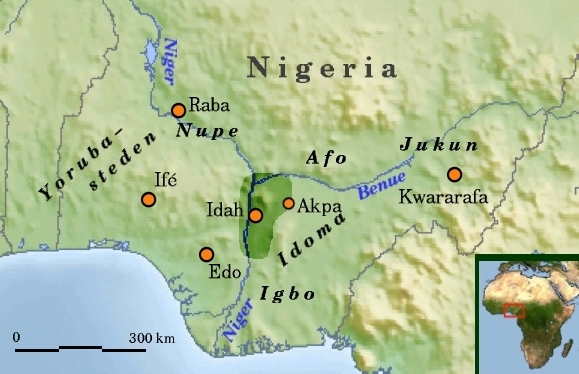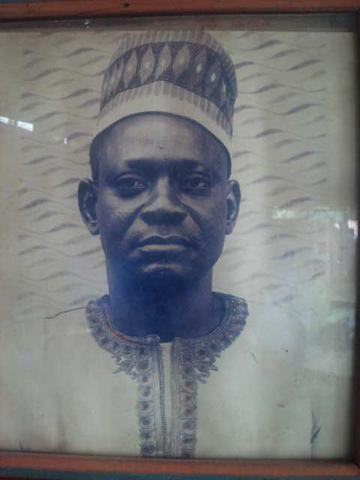
By J.S Boston
IF we assume, as we surely can, that the Niger and Benue rivers played an even more strategic role in the Nigerian past than they do today, then it is clear that the Igala area holds the key to an important chapter of Nigerian history, a chapter which particularly concerns the problem of interrelations between different groups in Nigeria.
The Igala are located at one of the natural crossroads in Nigerian geography, the Niger-Benue confluence, and this has brought them into contact with a wide range of peoples.
The confluence area, like Poland in Europe, seems to have been pulled in different directions at different periods. At times the Igala have been oriented towards the Yoruba, at other times towards Benin, or again, later on, towards the Jukun empire, and they themselves have exercised a considerable influence on surrounding peoples such as the Idoma, the Northern Ibo and the Nupe.
The vast range of contact between Igala and other peoples creates many problems for historical analysis, since so many threads have gone into the fabric of Igala culture, and Igala culture itself spreads outwards beyond the boundaries of the kingdom.
To simplify these problems for discussion, this paper concentrates on internal problems of development, on the influences that contributed to the development and growth of the Igala political and social system. And it excludes the influence that Igala itself has had on surrounding areas. In trying to reconstruct the Igala past, my main source of material is oral tradition.
But I also try to discuss the oral traditions in the light of linguistic information which Professor Armstrong has made available, and in the light of my own knowledge of Igala political and social structure. To simplify the many problems of analysis that are present in oral tradition, I shall concentrate on certain crucial problems.
In the Igala case these are three in number. First there is the problem of variants in the traditions, and particularly the problem of divergence on the question of origins. The second problem is the problem of chronology, which can be summarized briefly here by saying that the oral traditions seem to cover only a fraction of the total time-span of Igala history.
The third problem is the problem of separating the political facets of the traditions from their historical functions. This third problem is one that holds the key to the other two. The shortcomings of oral tradition in terms of diversity and in terms of chronological inadequacy can probably be explained by the fact that oral traditions perform a political as well as a historical function-in Malinowski’s phrase, they provide charters of institutions. And when we look at them as supposedly objective records of the past, we are perhaps distorting their perspective and failing to grasp something of the essential function of oral tradition.
For this reason I begin with a brief sketch of the Igala political system, and try to show how this inevitably brings diversity into the body of oral tradition.
The Igala form a kingdom whose ruler, the Ata, has his capital at Idah on the river Niger. The total population of the kingdom in 1962 was around 460,000. Constitutionally the king’s position was more like that of a Yoruba oba than that of a strong ruler like the Oba of Benin.
The Igala Ata ruled over a loosely federated kingdom in which the major provinces were organized and behaved like petty kingdoms. The provincial chiefs were relatively autonomous in their provincial capitals, and were only subject to the king in certain sovereign matters such as the payment of tribute, jurisdiction over homicide, and succession to their own offices.
As in the Yoruba kingdoms, a strong ruler could improve his position against that of the provincial chiefs. But basically the kingdom conformed to what Southall calls the pyramidal or federated type rather than to the other type of kingdom, like Benin, in which power is strongly centralized. The federated type of kingdom probably tends to have a higher degree of diversity in its oral traditions than kingdoms of the centralized type, since each provincial centre of government is also a centre for oral tradition, and the tradition of the royal group itself does not have the same kind of
overwhelming authority that royal tradition has in a kingdom like Benin.
In Igala some of the provincial chiefs are themselves members of localized branches of the royal clan, so that in addition to the problem of divergence between the histories of different descent groups, one gets the further problem of divergence within the royal traditions themselves, according as they come from the capital or from royal centres located in the provinces.
Igala is divided into clans, and its political structure is based on a system in which clans perform political functions at either the central level, in the capital, or at the provincial level or at the local level in the districts. Each clan has its own traditions, and in each case the tradition is partly concerned with justifying and validating the clan’s political function.
For instance, the royal clan is concerned with legitimating its right to rule, and bases this claim on the principle of descent from older dynasties in other kingdoms. The royal dynasty in Igala is an immigrant one. The indigenous population of Igala is represented politically, and in the oral traditions, by a group of clans called the Igala Mela, who are supposed to have occupied Idah from the beginning. They act as kingmakers in the political system, and also control an earth cult which symbolizes the fertility and benevolence of the land throughout the Igala kingdom.
…To be continued


